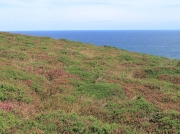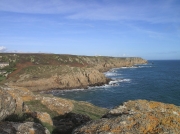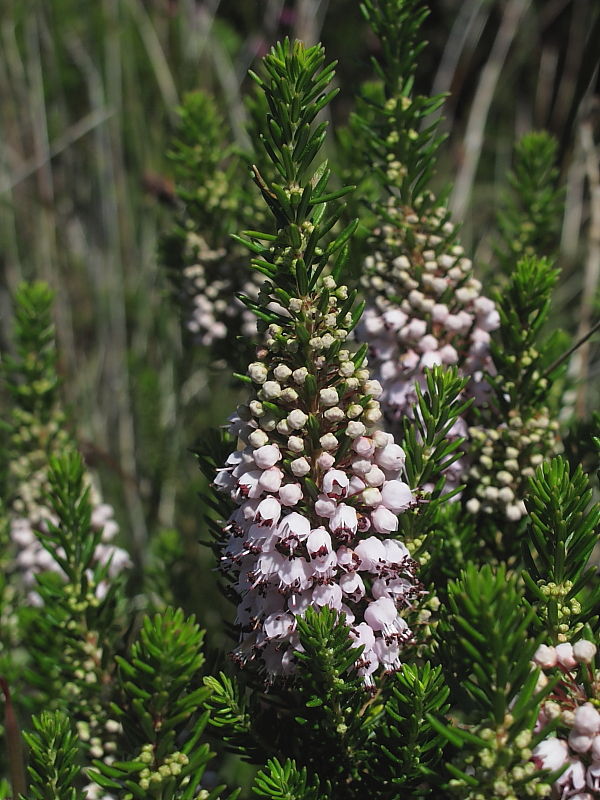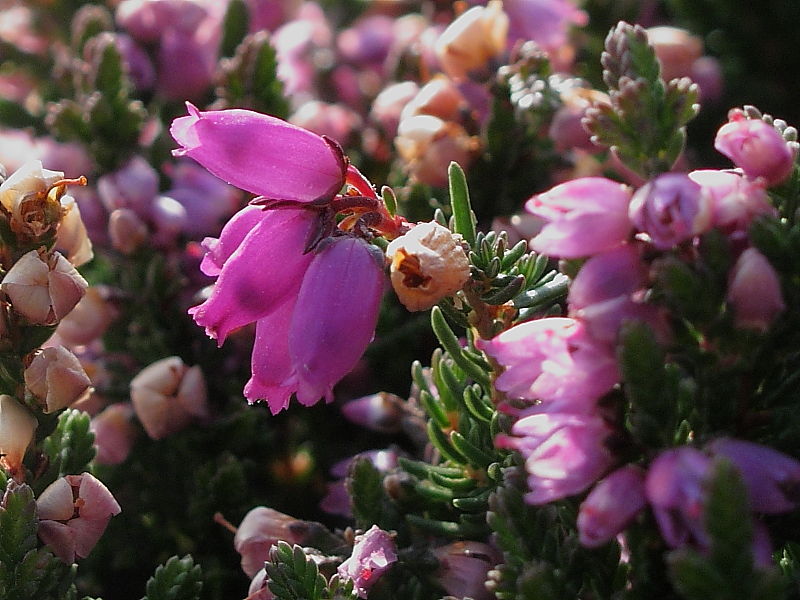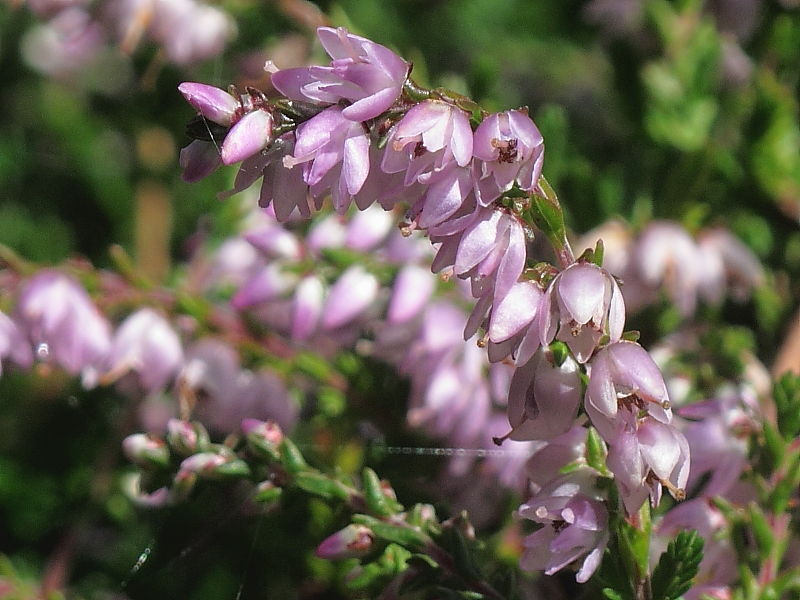Introduction to British Heaths
British Heaths (Erica) are part of the Heaths and Rhododendron family (Ericaceae).
They are dwarf shrubs with simple, narrow, evergreen leaves in whorls.
Their flowers are regular, or slightly irregular, with 4 or 5 sepals and petals. The petals are usually fused with twice as many stamens as petals.
Heaths are all plants of acid soils.
The Heaths flower from mid summer right into the autumn giving rise to spectacular landscapes of low shrubs coloured an amazing array of pinks and purples from the flowers and oranges and umbers from the seeds.
We see large stretches of heathland on various coastal sites in Cornwall like Porthgwarra and Godrevy.
Heaths are a valuable source of nectar for many species of insect, including various butterflies, moths and bees, especially as they flower quite late in the year.
Heaths are a larval foodplant for the caterpillars of many moths and butterflies including Silver-studded Blue (Plebejus argus), Holly Blue (Celastrina argiolus) and Green Hairstreak (Callophrys rubi).
Dyes made from Heaths have been used to colour fabric and some say it has inspired certain tartans.
Cornish Heath (Erica vagans)
The key identification characteristics of Cornish Heath (Erica vagans) are:
- Stamens protruding from mouth of corolla
- Pedicels (the stalk of the flower) longer than flowers
- Bell-shaped flowers
Bell Heather (Erica cinerea)
The key identification characteristics of Bell Heather (Erica cinerea) are:
- Stamens not protruding from mouth of corolla
- Leaves and sepals glabrous (without hairs)
- Dwarf shrub to 60cm
- Stems with bunches of short, leafy shoots in leaf axils
- Dark reddish purple flowers
Portuguese Heath (Erica lusitanica)
The key identification characteristics of Portuguese Heath are:
- Stamens not protruding from mouth of corolla
- Leaves and sepals glabrous (without hairs)
- Shrub to 2m
- Flowers pink in bud, white when open
Dorset Heath (Erica ciliaris)
The key identification characteristics of Dorset Heath (Erica ciliaris) are:
- Stamens not protruding from mouth of corolla
- Leaves and sepals with long, usually glandular hairs
- Flowers in racemes
- Anthers without appendage
Cross-leaved Heath (Erica tetralix)
The key identification characteristics of Cross-leaved Heath (Erica tetralix) are:
- Stamens not protruding from mouth of corolla
- Leaves and sepals with long, usually glandular hairs
- Flowers in umbel-like clusters, anthers with awn-like appendage (bristle)
- Sepals and underside of leaves with short dense hairs as well as glandular hairs
- Leaves revolute (rolled back from the tip), obscuring most of the lower side
Wild flowers similar to British Heaths (Erica)
It is probably surprising that Heather or Ling (Calluna vulgaris) is not one of the British Heaths (Erica) although it is part of the Heath and Rhodenedron family (Ericaceae). The key difference is the leaves of Heather or Ling are opposite and not in whorls like the Heaths (Erica).
Heather or Ling (Calluna vulgaris)
The key identification characteristics of Heather or Ling (Calluna vulgaris) are:
- Leaves opposite (not in whorls)
- 4 sepals and petals
- corolla shorter than calyx
- leaves small (1-2mm) in 4 rows and overlapping on young shoots
The wild flower gallery has images of other wild flowers in Britain shown by family.
